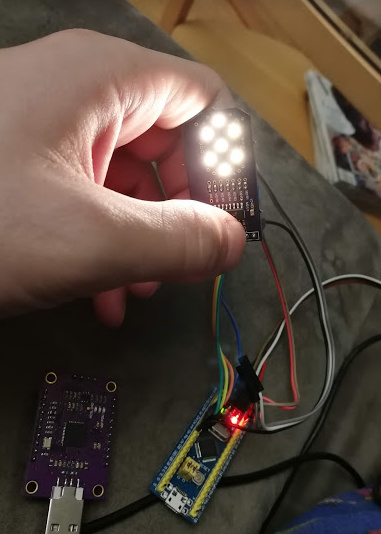Last summer, we got a donation of about 2 million white LEDs by our best estimate.
A bunch have been thrown out in the move (which kinda hurts, but that’s pure emotion, that was probably the right call), so we’re down to a paltry hundred thousand or so. Still several lifetime supplies, probably.
@TomKeddie built a 7-segment display out of them, which is a fantastic idea.
So, cribbing from that, and (very slowly) furthering my secret VHS business card ulterior motive, I’ve done an addressable 7-segment module as a test.
Here it is all covered in solder paste:

Shout out to @lukecyca, @DerrickA4mag, @chadleaman, @Janet, @Rob_MacKenzie, and I’m sure a bunch of others who got our electronics bench sorted out. Our components aren’t on the entire other side of the space now, so gathering stuff is super smooth, and our setup feels great. I’m stoked.
Quite tidy looking after going through the reflow oven:

And it’s bright!
Obviously it’s blowing out the camera sensor so it’s hard to tell, but you can see the flashlight effect going on across my hand there. Each LED is running at 3.3v / 470 Ohms = 7mA, which is obviously way too high for the application.
The IC on there is 74HC595 latching shift register, the idea being that you can hook up 7 pins to a microcontroller (including power and ground), and then you can chain nigh-infinite displays one after the other. In theory.
If anyone else wants to play with them, definitely hit me up. I have two spare boards, 49 spare shift registers ICs, and 199,993 spare white LEDs.
For the Upverter folks, my fantastically spelled PCB is here, and I also did something strange. I heard rumours that the module feature was fixed, so that board uses my LED/shift register module, to make it super simple to create chainable PCBs from these components in the future.

If any FOSS license nerds have Strong Opinions on what hardware license I should standardise on for all my stuff, I’d love to hear arguments about which one is the best and why, for those who are in tune with that world.
